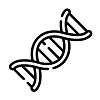1.3: Designing an Experiment
- Page ID
- 133619
\( \newcommand{\vecs}[1]{\overset { \scriptstyle \rightharpoonup} {\mathbf{#1}} } \)
\( \newcommand{\vecd}[1]{\overset{-\!-\!\rightharpoonup}{\vphantom{a}\smash {#1}}} \)
\( \newcommand{\id}{\mathrm{id}}\) \( \newcommand{\Span}{\mathrm{span}}\)
( \newcommand{\kernel}{\mathrm{null}\,}\) \( \newcommand{\range}{\mathrm{range}\,}\)
\( \newcommand{\RealPart}{\mathrm{Re}}\) \( \newcommand{\ImaginaryPart}{\mathrm{Im}}\)
\( \newcommand{\Argument}{\mathrm{Arg}}\) \( \newcommand{\norm}[1]{\| #1 \|}\)
\( \newcommand{\inner}[2]{\langle #1, #2 \rangle}\)
\( \newcommand{\Span}{\mathrm{span}}\)
\( \newcommand{\id}{\mathrm{id}}\)
\( \newcommand{\Span}{\mathrm{span}}\)
\( \newcommand{\kernel}{\mathrm{null}\,}\)
\( \newcommand{\range}{\mathrm{range}\,}\)
\( \newcommand{\RealPart}{\mathrm{Re}}\)
\( \newcommand{\ImaginaryPart}{\mathrm{Im}}\)
\( \newcommand{\Argument}{\mathrm{Arg}}\)
\( \newcommand{\norm}[1]{\| #1 \|}\)
\( \newcommand{\inner}[2]{\langle #1, #2 \rangle}\)
\( \newcommand{\Span}{\mathrm{span}}\) \( \newcommand{\AA}{\unicode[.8,0]{x212B}}\)
\( \newcommand{\vectorA}[1]{\vec{#1}} % arrow\)
\( \newcommand{\vectorAt}[1]{\vec{\text{#1}}} % arrow\)
\( \newcommand{\vectorB}[1]{\overset { \scriptstyle \rightharpoonup} {\mathbf{#1}} } \)
\( \newcommand{\vectorC}[1]{\textbf{#1}} \)
\( \newcommand{\vectorD}[1]{\overrightarrow{#1}} \)
\( \newcommand{\vectorDt}[1]{\overrightarrow{\text{#1}}} \)
\( \newcommand{\vectE}[1]{\overset{-\!-\!\rightharpoonup}{\vphantom{a}\smash{\mathbf {#1}}}} \)
\( \newcommand{\vecs}[1]{\overset { \scriptstyle \rightharpoonup} {\mathbf{#1}} } \)
\( \newcommand{\vecd}[1]{\overset{-\!-\!\rightharpoonup}{\vphantom{a}\smash {#1}}} \)
Experimental design is an extremely important part of the scientific process because the conclusions drawn can only be as good as the experiment itself. If the experimental setup is flawed in a significant way, it can impact the data collected and in turn lead to a faulty or incorrect conclusion.
A good experiment’s appearance can vary depending on the hypotheses being tested, but most experiments have a few things in common. Most of the variables are kept the same, but one may be changed by the experimenters. By changing only one variable and keeping everything else the same, we can have more confidence in our conclusion. When many variables are changed together, it can be hard to tease apart which variable(s) led to the result.
Variable -- a part of an experiment that can change or be changed
Experimental variable -- the variable that is purposefully being changed
Experimental group -- the group that is exposed to the experimental variable
Control -- known variables that are purposefully kept constant or the same
Control Group -- the group that will experience a known or expected outcome and can be used as a comparison tool for the experimental group
Positive Control -- the group exposed to a treatment/variable that is expected to produce results
Negative Control -- the group exposed to a treatment/variable that is not expected to produce results
Independent variable -- the variable that is changed by the experimenters (also called the experimental variable)
Dependent variable -- the outcome measured by the experimenters
A good experiment does not rely on a single test to support or reject a hypothesis. The reason being is that there will always be some variance in results and in some cases, random chance can lead to something very misleading. To limit the effects of variance and random chance, researchers and scientists will use replicates in their experiments. Replicates are identical runs of the same experiment. The more times an experiment is run, the more confident a researcher can be that their results are representative of the natural world. That being said, there are limitations on how many replicates one can use and so researchers must strike a balance to maximize the number of replicates while maintaining the feasibility of the experiment.
Another important aspect of experimental design is reproducibility. Studies should be designed and explained in a way so that another researcher could set up the same experiment and get similar results. When it’s impossible to reproduce the experiment, it takes away from its validity. This means that it’s very important to be clear, direct, and thorough when explaining the experiment’s materials and setup.
For this exercise, you will design an experiment to test the hypotheses you created for Scenario 2 from Exercise 1.1. Use the worksheet below to determine the important components of your experiment. Then, write a step-by-step explanation on how you plan to conduct your experiment.
|
Independent Variable |
|
|---|---|
|
Dependent Variable |
|
|
Necessary Materials |
|
|
Number of Replicates |
In the space below, write a step-by-step guide for conducting your experiment. This will serve as your procedure for the next exercise so be very clear in your instructions!


